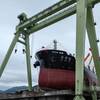S.Korea's LPG Imports to Grow: Drewry
South Korea’s liquid petroleum gas (LPG) imports are expected to increase 9.5% in 2019 on account of the growth is due to stronger demand from the petrochemical sector.
The recent policy change that will allow LPG-fueled vehicles in the private sector is another booster, said Drewry.
South Korea’s LPG market was starting to look saturated with low demand, but as the government is reconsidering cleaner fuels, its demand is likely to shoot up.
Drewry said that severe air pollution in the country caused mainly by vehicular emissions has forced the government to rethink its earlier strategy.
Until February 2019 only commercial vehicles such as taxis, rental cars, vans and small buses in the country were allowed to use LPG as auto fuel. But from end-March, the government has permitted anyone in the country to buy LPG-powered vehicles, or to modify their cars to run on LPG as part of its efforts to improve air quality. The move makes sense, as LPG vehicles emit less fine dust compared with conventional gas or diesel-fueled cars.
In 2016, South Korea had close to 2.0 million LPG-powered vehicles which consumed 3.5 million tonnes of LPG, but the figure declined in 2017 and 2018 owing to the lack of initiatives. However, with restrictions lifted, we expect the number of LPG-fueled vehicles to increase, raising LPG consumption in the transportation sector. Furthermore, LPG used as an auto fuel is 42% cheaper than diesel or gasoline.
LPG consumption in the transportation sector in 2018 is estimated at a lower 46% over 2017, but we expect the figure to rise to 51% in 2019 due to the new policy. The autogas policy follows a tax cut on LPG and LNG imports in November 2018 indicating the push that the cleaner fuels have been receiving in the country.










